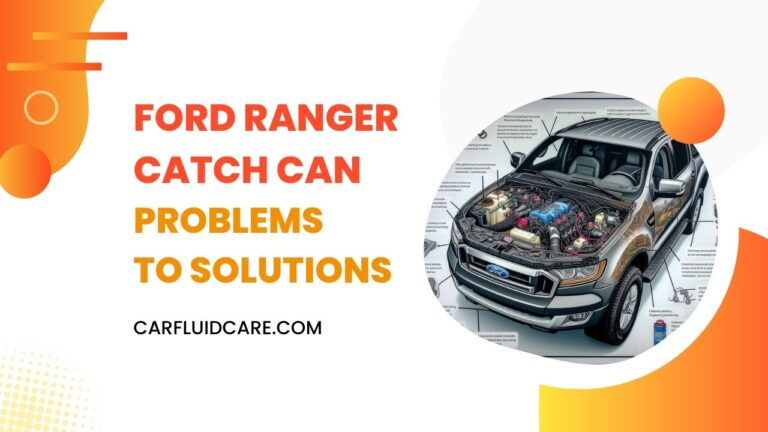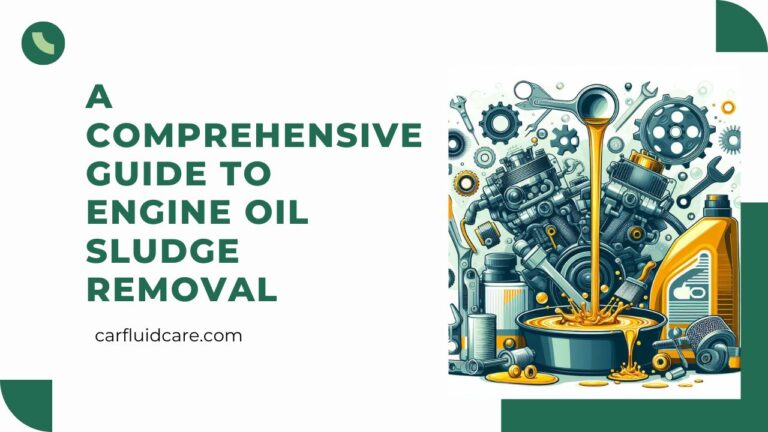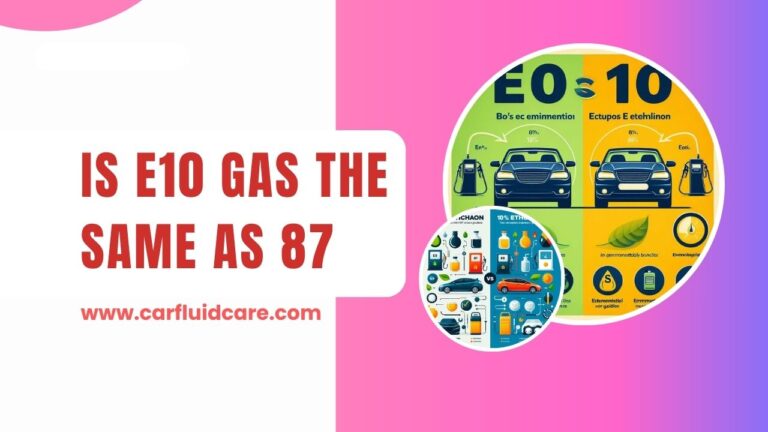Oil catch can with breather or without

An oil catch can is a device used in internal combustion engines to prevent oil vapors and contaminants from entering the intake system. The catch can is installed in the PCV (Positive Crankcase Ventilation) system, which is responsible for ventilating the crankcase and removing harmful gases.
Here’s the difference between an oil catch can with a breather and one without a breather:
- Catch Can with Breather:
- This type of catch can typically have an additional breather filter attached to it.
- The breather filter allows the crankcase to vent excess pressure and gases to the atmosphere.
- It helps reduce pressure build-up in the crankcase, which can occur during high-performance driving or under certain engine conditions.
- The breather filter also prevents contaminated air from being recirculated into the engine.
- Catch Can without Breather:
- This type of catch can does not have an additional breather filter. Instead, it relies on the closed system to collect and trap oil vapors.
- The catch can is connected to the PCV system, and it separates oil vapors and contaminants from the crankcase gases.
- The separated oil is collected in the catch can, preventing it from entering the intake system and potentially causing carbon buildup on valves and other components.
Here’s a table summarizing the key differences between an oil catch can with a breather and one without a breather:
| Feature | Catch Can with Breather | Catch Can without Breather |
| Breather Filter | Includes an additional breather filter attached to the catch can. | Does not have an additional breather filter. Relies on a closed system. |
| Venting to Atmosphere | Allows crankcase gases to vent excess pressure and contaminants to the atmosphere. | Maintains a closed system without venting gases to the atmosphere. |
| Pressure Reduction | Helps reduce pressure build-up in the crankcase during high-performance driving or specific engine conditions. | Focuses on trapping oil vapors without actively managing crankcase pressbure through atmospheric venting. |
| Recirculation Prevention | Prevents contaminated air from being recirculated into the engine intake system. | Prevents oil vapors and contaminants from entering the intake system, reducing the risk of carbon buildup on valves and components. |
| Application Focus | Commonly used in performance applications where higher crankcase pressures may occur. | Suitable for applications where maintaining a closed system and controlling emissions are a priority. |
| Emissions Consideration | May not be compliant with emissions regulations due to venting to the atmosphere. | Generally aligns with emissions regulations as it maintains a closed system. |
| Maintenance | Requires periodic checking and maintenance of the breather filter. | Requires regular inspection and emptying of the catch can to ensure proper functioning. |
Choosing Between the Two: Which one should you choose?
A catch can with a breather is often used in performance applications where there may be higher crankcase pressures.
Here are some factors to consider:
Vehicle type: Closed-loop systems are better suited for high-performance or turbocharged engines, while a breather may be sufficient for a daily driver.
Driving habits: If you frequently push your engine hard, a closed-loop system is recommended to prevent intake buildup.
Emissions regulations: Some regions have stricter emissions standards, making a closed-loop system preferable.
Budget: Breather catch cans are typically cheaper and easier to install.
A catch can without a breather is suitable for applications where maintaining a closed system and controlling emissions are a priority.
oth oil catch cans with and without breathers have their pros and cons, and the best choice for you will depend on your specific situation and goals. Here’s a breakdown:
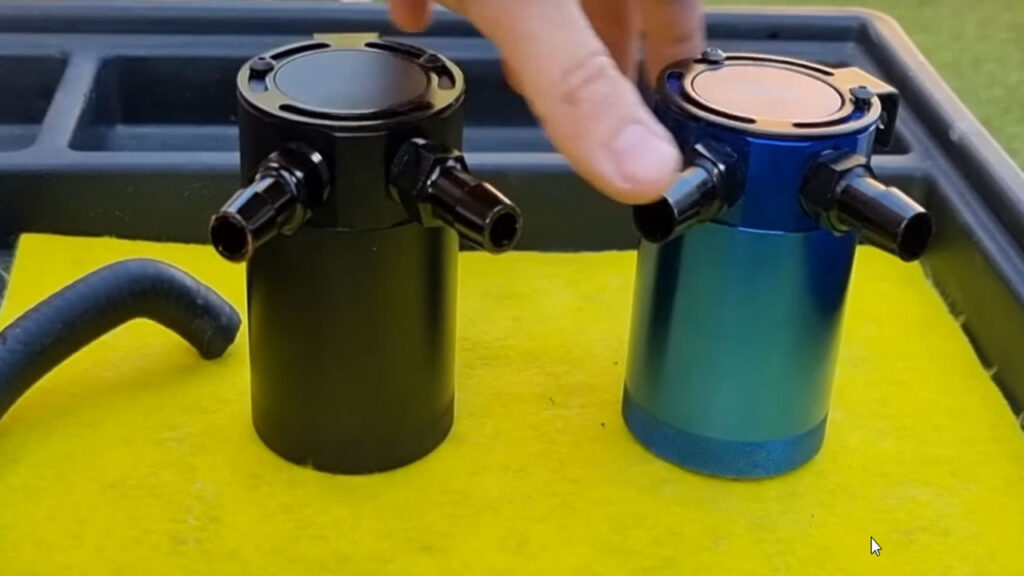
Oil catch can with breather:
Pros:
- Simpler installation: Generally easier to install as it doesn’t require routing a hose back to the intake manifold.
- Reduces crankcase pressure: Allows pressure buildup in the crankcase to vent, potentially reducing oil leaks and blow-by.
- Lower cost: Typically cheaper than a closed-loop catch can.
Cons:
- Oil discharge: Breather releases oil vapor and mist into the atmosphere, which can contribute to emissions and make a mess in your engine bay.
- Doesn’t prevent intake buildup: Oil vapor escapes, still potentially contaminating the intake manifold and intercooler.
- Vacuum effect: In some cases, the breather can create a vacuum that draws unmetered air into the engine, affecting performance.
Oil catch can without breather (closed-loop):
Pros:
- Prevents intake contamination: Oil vapor and mist are routed back to the intake manifold, preventing buildup and improving combustion efficiency.
- Reduced emissions: No oily discharge into the atmosphere.
- More consistent air/fuel mixture: No risk of unmetered air entering the engine.
Cons:
- More complex installation: Requires routing a hose back to the intake manifold.
- Higher cost: Generally more expensive than a breather catch can.
- Potential crankcase pressure buildup: If the return line becomes clogged, crankcase pressure may increase.
It’s important to note that the effectiveness of an oil catch can depends on factors such as the design of the catch can, the type of engine, and the driving conditions. Regular maintenance and monitoring of the catch are also essential to ensure it is functioning properly. The choice between a catch can with a breather and one without depends on your specific engine setup, performance goals, and preferences.
Oil catch can with breather or without Ford
When deciding whether to use an oil catch can with a breather or without on a Ford vehicle, there are a few considerations to keep in mind. The choice may depend on your specific Ford model, engine type, performance goals, and local regulations. Here are some general points to help guide your decision:
Oil Catch Can with Breather:
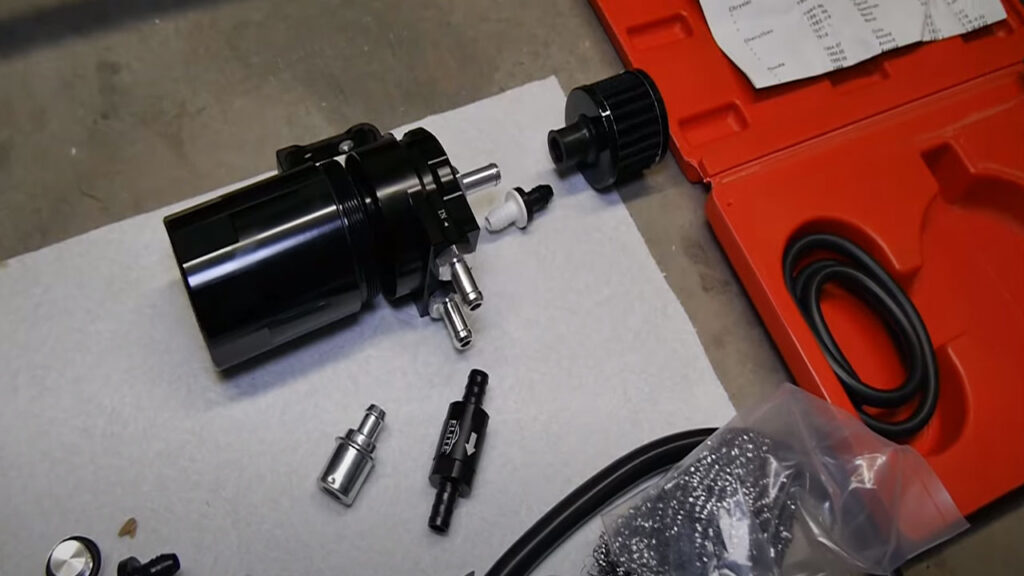
Benefits:
- Provides additional venting to the atmosphere, which can be beneficial in high-performance applications where there may be higher crankcase pressures.
- Helps reduce pressure buildup in the crankcase during aggressive driving conditions.
- Can contribute to a more aggressive sound due to the venting of gases.
Considerations:
- May not be compliant with emissions regulations in some areas due to venting to the atmosphere.
- Requires regular maintenance of the breather filter.
Oil Catch Can without Breather:
Benefits:
- Maintains a closed system, preventing oil vapors and contaminants from entering the intake system.
- Generally aligns with emissions regulations as it doesn’t vent to the atmosphere.
- Requires less maintenance compared to a catch can with a breather.
Considerations:
- Suitable for applications where emissions compliance is a priority.
- May be preferred in street-driven vehicles where a closed system is desired.
Vented vs unvented oil catch can
The terms “vented” and “unvented” primarily refer to the presence and function of a breather on an oil catch can.
Here’s a breakdown of the differences and what each type is best suited for:
Vented Oil Catch Can (with Breather):
Venting to Atmosphere: A vented catch can typically have an additional breather filter that allows the crankcase gases to vent to the atmosphere.
Pressure Reduction: It helps reduce pressure build-up in the crankcase, especially during high-performance driving or aggressive engine conditions.
Emissions Considerations: Vented systems may not be compliant with emissions regulations in some areas due to the release of gases into the atmosphere.
Maintenance: Requires periodic checking and maintenance of the breather filter.

Read More 7 Surprising Engine Oil Treatment Benefits
Pros:
- Simpler installation: Typically easier to install due to less hose routing.
- Reduces crankcase pressure: Breather allows pressure buildup to escape, potentially reducing blow-by and oil leaks.
- Lower cost: Generally cheaper than unvented (closed-loop) catch cans.
Cons:
- Oil discharge: Breather releases oil vapor and mist into the atmosphere, contributing to emissions and engine bay mess.
- Intake contamination: Oil vapor still escapes, potentially contaminating the intake manifold and intercooler.
- Vacuum effect: In some cases, the breather can create a vacuum that draws unmetered air into the engine, affecting performance.
Unvented Oil Catch Can (Closed-Loop):
Closed System: An unvented catch can maintain a closed system, preventing crankcase gases from venting to the atmosphere.
Emissions Compliance: Generally aligns with emissions regulations as it doesn’t release gases to the atmosphere.
Pressure Control: Focuses on trapping oil vapors and contaminants without actively managing crankcase pressure through atmospheric venting.
Maintenance: Requires regular inspection and emptying of the catch can to ensure proper functioning.
Pros:
- Prevents intake contamination: Oil vapor and mist are routed back to the intake manifold, preventing buildup and improving combustion efficiency.
- Reduced emissions: No oily discharge into the atmosphere.
- More consistent air/fuel mixture: No risk of unmetered air entering the engine.
Cons:
- More complex installation: Requires routing a hose back to the intake manifold.
- Higher cost: Generally more expensive than vented catch cans.
- Potential crankcase pressure buildup: If the return line becomes clogged, crankcase pressure may increase.
Read Also A Comprehensive Guide To Engine Oil Sludge Removal
Does an oil catch can need a filter?
An oil catch can typically includes a filter or some form of separation mechanism as part of its design. The primary purpose of the filter in an oil catch can is to separate oil vapors and contaminants from the crankcase gases before they are recirculated back into the intake system.
The filter in an oil catch can helps to prevent oil mist and particulate matter from entering the engine’s intake manifold. By capturing these contaminants, the catch can helps reduce the accumulation of carbon deposits on intake valves and other engine components. This is particularly important in direct injection engines, where the absence of fuel spray over the intake valves can lead to carbon buildup.
Whether an oil catch can needs a filter depends on its type and your specific goals. Here’s a breakdown:
Oil catch cans with breather:
Generally don’t have filters: These cans primarily rely on baffles and internal surfaces to separate oil vapor and mist from air. The air and any remaining fine mist then vent out through the breather.
Benefits: Simpler design, easier installation, lower cost.
Drawbacks: Oil mist can still escape into the atmosphere, causing emissions and engine bay mess. Some may not be effective enough for high-performance engines.
Oil catch cans without breather (closed-loop):
Some have filters, some don’t: While many rely on baffles and internal separation, some closed-loop cans incorporate additional filters (typically bronze or stainless steel) before the oil/air mixture reenters the intake manifold.
Benefits with filter: More effective at capturing fine oil mist, preventing intake contamination, improving engine performance and longevity.
Benefits without filter: Simpler design, lower cost, potentially less restrictive for airflow.
Drawbacks without filter: May not be as effective at catching all oil mist, potentially allowing some to reach the intake.
Oil catch can vent to atmosphere vs recirculation
The decision to vent an oil catch can to the atmosphere or recirculate it back into the intake system involves considerations related to emissions, performance, and local regulations. Here’s a breakdown of the key differences between venting to the atmosphere and recirculating:

- Venting to Atmosphere:
- Pros:
- Reduces crankcase pressure: Venting to the atmosphere helps prevent excessive pressure buildup in the crankcase, especially during high-performance driving.
- May provide a more aggressive sound: Venting crankcase gases to the atmosphere can produce a unique sound, which some enthusiasts find appealing.
- Cons:
- Emissions concerns: Venting to the atmosphere may not comply with emissions regulations in some areas. It releases unfiltered gases, including hydrocarbons, into the environment.
- Potential for oil residue: Vented gases may contain oil mist, which can contribute to environmental pollution and may require periodic cleaning.
- Pros:
- Recirculation (Closed System):
- Pros:
- Emissions compliance: Recirculating crankcase gases back into the intake system is often more environmentally friendly and aligns with emissions regulations.
- Prevents environmental pollution: Recirculation reduces the release of oil vapors and contaminants into the atmosphere.
- May enhance fuel efficiency: Recirculation can contribute to better fuel vaporization and combustion efficiency.
- Cons:
- Potential for carbon buildup: Recirculated gases may still contain some contaminants, contributing to carbon deposits on intake valves over time.
- Pros:
Considerations:
Performance vs. Compliance: Venting to the atmosphere might be chosen for performance reasons, especially in high-performance or racing applications. Recirculation is often preferred for compliance with emissions regulations and environmental considerations.
Local Regulations: Always check and comply with local laws and regulations regarding emissions and modifications to the vehicle’s emission control system.
Engine Type: The type of engine and its requirements may influence the effectiveness of venting or recirculating setups.
Maintenance: Both vented and recirculating systems may require periodic maintenance, but the nature of the maintenance differs.
Ultimately, the choice between venting to the atmosphere and recirculating an oil catch can depends on your priorities, including performance goals, emissions compliance, and environmental impact. It’s advisable to consult with experts and consider local regulations to make an informed decision based on your specific circumstances.
Oil catch can diagram
This diagram would typically show:
- Crankcase connections: Two ports for hoses connecting to the PCV valve and crankcase vent.
- Internal baffles: These guide the air and oil mist within the can, allowing oil to settle and cleaner air to exit through the breather.
- Breather valve: This releases excess pressure and oil mist into the atmosphere.
- Drain valve: Allows for easy removal of collected oil.
What is breather filter for oil catch can?
A breather filter, in the context of an oil catch can, is an additional filter element attached to the catch can setup. The primary purpose of the breather filter is to allow the release of crankcase gases to the atmosphere, reducing pressure buildup in the crankcase.
Here’s how it typically works:
- Crankcase Ventilation System:
- Internal combustion engines produce gases and pressure in the crankcase as a byproduct of combustion and other processes.
- The crankcase ventilation system is designed to vent these gases to prevent excessive pressure buildup, which can lead to oil leaks and other issues.
- Oil Catch Can with Breather Filter:
- An oil catch can is installed in the crankcase ventilation system to capture oil vapors and contaminants before they are recirculated into the intake system.
- In some setups, a breather filter is added to the catch can. This breather filter allows the captured gases, which may include residual oil vapors, to be released to the atmosphere rather than being recirculated into the engine.
- Benefits of a Breather Filter:
- Pressure Reduction: The breather filter helps reduce excessive pressure in the crankcase, especially during high-performance driving or aggressive engine conditions.
- Sound: The release of gases through the breather filter can produce a distinct sound, which some automotive enthusiasts find appealing.
- Performance in Racing Applications: In racing or high-performance applications, venting to the atmosphere through a breather filter is sometimes preferred for optimal crankcase pressure control.
- Considerations:
- Emissions: One consideration with breather filters is that they release gases, potentially including hydrocarbons, to the atmosphere. This may not be compliant with emissions regulations in certain areas.
- Maintenance: Breather filters may require periodic inspection and cleaning or replacement to ensure proper functioning.
FAQ
Do I need a breather on my catch can?
A breather on a catch can is not mandatory but can reduce crankcase pressure, release gases, and create a unique sound. Consider local regulations.
Do catch cans need a vent?
Catch cans don’t necessarily need a vent, but some use a breather to release crankcase gases to the atmosphere, reducing pressure.
What is the purpose of the oil breather?
An oil breather on a catch can allows controlled venting of crankcase gases, preventing excessive pressure buildup and contributing to a closed crankcase ventilation system.
What are the negatives of oil catch can?
Potential negatives include emissions concerns if vented, maintenance requirements for filters, and the need for compliance with local regulations.
Do oil catch cans reduce performance?
While oil catch cans can reduce carbon buildup and maintain performance, their impact may vary. Venting setups might enhance performance but could pose emissions challenges.
Does an oil catch can improve reliability?
Oil catch cans, by preventing oil contaminants from reaching the intake system, can contribute to improved reliability and longevity of the engine components.

Conclusion
Should I use an oil catch can with a breather or without? The choice between an oil catch can with a breather or without depends on your specific needs. A breather allows controlled venting, reducing pressure. Without a breather maintains a closed system, complying with emissions regulations. Consider your performance goals and local regulations.

